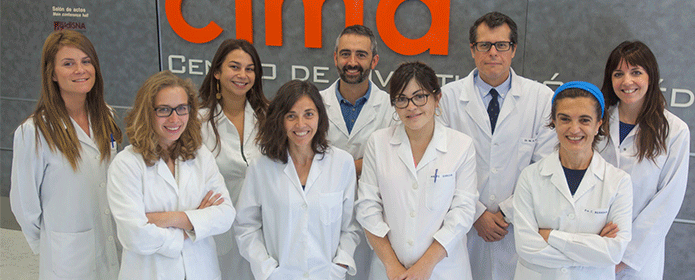New approach to liver cancer treatment
Researchers at CIMA of the University of Navarra, with the support of the "la Caixa" Banking Foundation, develop a strategy that slows the growth of the most common liver tumor.

The burden of chronic liver disease in Europe has increased significantly in recent decades. At present, it is both a clinical and an economic problem and the prognosis is that it will continue to grow in the coming years.
Specifically, hepatocellular carcinoma, the most common liver cancer, has two alarming characteristics: its incidence has been increasing in recent years, both in Western and developing countries development, and patients diagnosed with this tumor subject have a very low survival rate. There are currently no effective treatments to slow the growth of this tumor, nor to stop the growth of liver fibrosis, tissue degeneration due to persistent liver damage that facilitates tumor development .
Researchers from the Hepatology Program of the research center Applied Medicine (CIMA) of the University of Navarra, belonging to the CIBER de Enfermedades Hepáticas y Digestivas(CIBEREHD) and the high school de research Sanitaria de Navarra (IdiSNA), have developed a new approach to treat this liver tumor subject . The results have been published in Hepatology, the official journal of the American Association for the Study of Liver Diseases (AASLD) and one of the leading international publications in the field.
Researchers at CIMA have demonstrated how the simultaneous targeting of two vital epigenetic mechanisms in both tumor and surrounding cells (stromal cells) effectively slows the growth of hepatocellular carcinoma in experimental models. "In this work we have identified and characterized new therapeutic targets based on a coordinated activity between DNA methylation and histone methylation. We have exhaustively analyzed these mechanisms in tumor biology and, together with the Molecular Therapies and Hemato-oncology Programs at CIMA, we have tested new pharmacological agents that potently curb hepatic carcinogenesis," says Dr. Maite García, coordinator of work, led by Drs. Matías Ávila and Carmen Berasain, of the Hepatology Program at CIMA.
The research, which is supported by the "la Caixa" Banking Foundation, takes another step forward in the search for new ways to cure liver cancer. "The commitment to research is one of the priority lines of the "la Caixa" Banking Foundation, which has tripled its investment, from 30 to 90 million euros until 2019, in order to find solutions to some of the most pressing health problems of our century," says Jaume Giró, director general of the "la Caixa" Banking Foundation.
This partnership opens the door to the development of therapies to inhibit the progression of chronic liver disease (antifibrotic drugs) and the treatment of hepatocellular carcinoma.
